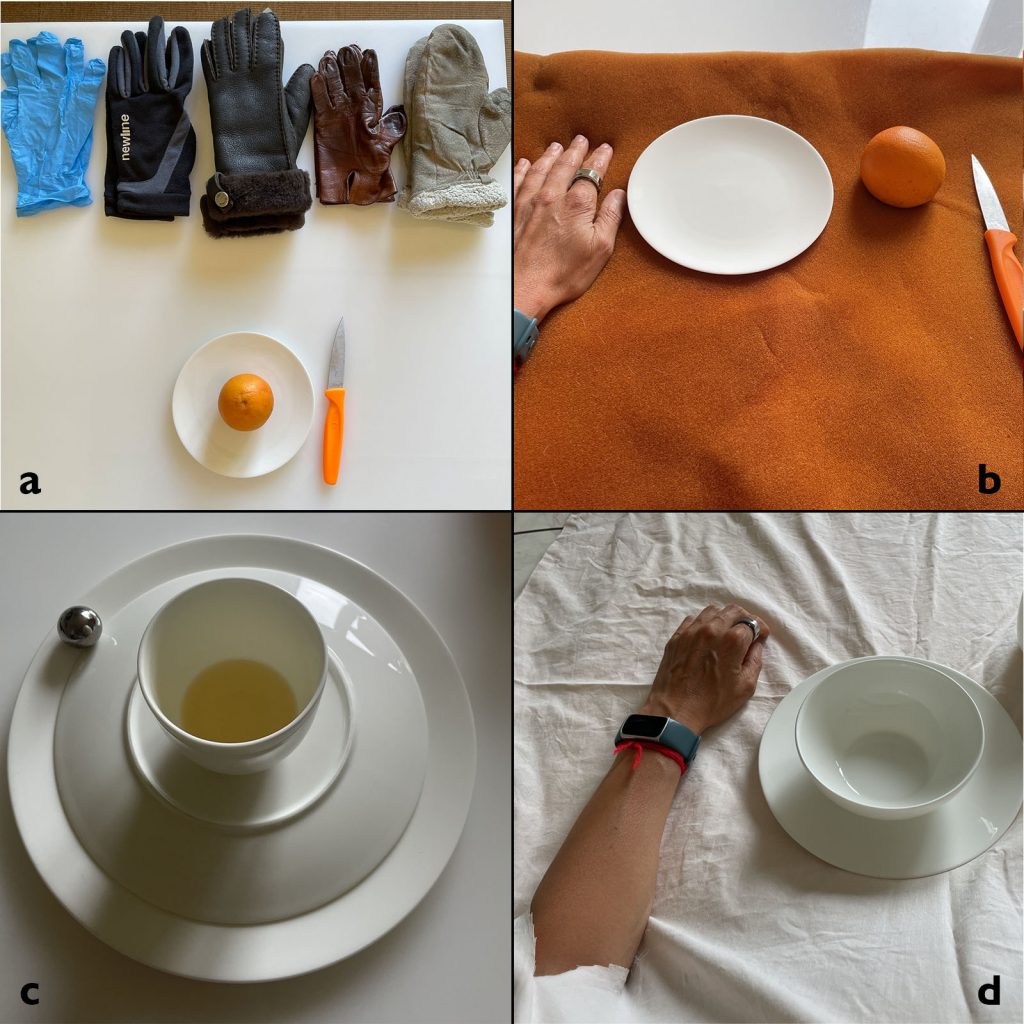Introduction
This post introduces four technology-free experiments to explore embodiment using a table. From the observations described in the previous post an ideation process is started which uses estrangement or defamiliarization as its main mechanism. Estrangement is about making the familiar strange [1] by using the body, context, routines, materials or props in unfamiliar ways [2]. Defamiliarization disrupts the usual way of doing something and destabilizes our way of thinking about and acting in common situation. From destabilization may emerge insights and ideas. This creates a new space for designing for everyday engagement [2].
Experiments
The experiments are conducted by the design researcher and describe their first person perspective. Strategies of changing bodily sensations through artefacts (for example tableware) and altering the material (for example the surface of the table) [2] were used. The main goal of the experiments was to get insights into how different interventions might increase the sense of connection between the actor, the action and the objects. The descriptions focus on the bodily sensations and the emotions which are evoked. In each experiment different variations were tried and described. Every post gives a summery of the most relevant findings and how they may be used in a next prototype or design. The images with each experiment (a,b,c,d) support the main findings.

a. Fingers and hands while peeling an orange
b. Elbows and lower arms while peeling an orange
c. Drinking tea and playful tableware
d. Dressing the table
Follow the links to read more about the individual experiments, over time more links will be activated.
References
[1] Genevieve Bell, Mark Blythe, and Phoebe Sengers. 2005. Making by making strange: Defamiliarization and the design of domestic technologies. ACM Trans. Comput.-Hum. Interact. 12, 2 (June 2005), 149–173. https://doi.org/10.1145/1067860.1067862
[2] Danielle Wilde, Anna Vallgårda, and Oscar Tomico. 2017. Embodied Design Ideation Methods: Analysing the Power of Estrangement. In Proceedings of the 2017 CHI Conference on Human Factors in Computing Systems (CHI ’17). Association for Computing Machinery, New York, NY, USA, 5158–5170. https://doi.org/10.1145/3025453.3025873